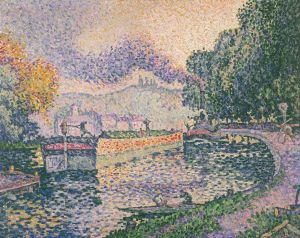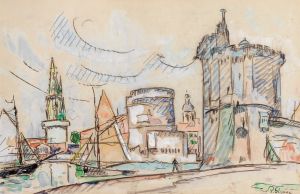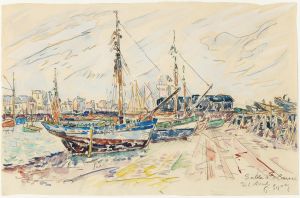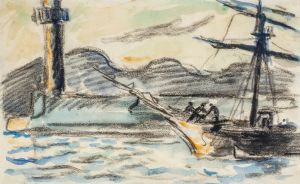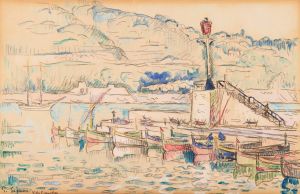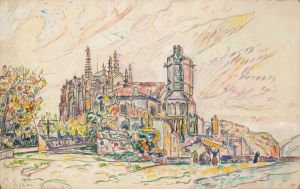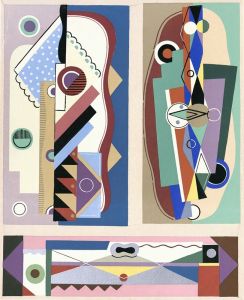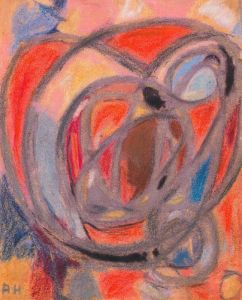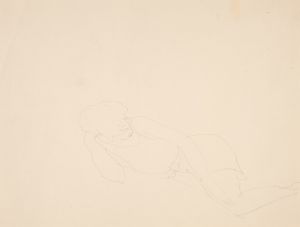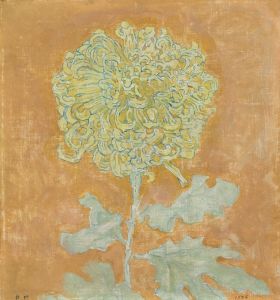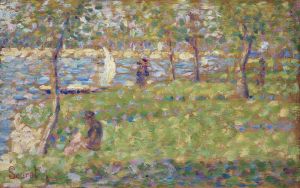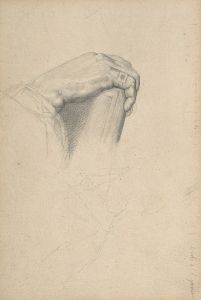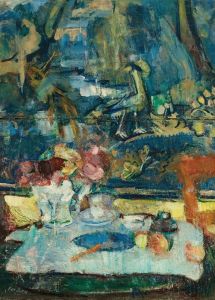
Application of Charles Henry’s Chromatic Circle; Théâtre-Libre playbill of January 31, 1889
A hand-painted replica of Paul Signac’s masterpiece Application of Charles Henry’s Chromatic Circle; Théâtre-Libre playbill of January 31, 1889, meticulously crafted by professional artists to capture the true essence of the original. Each piece is created with museum-quality canvas and rare mineral pigments, carefully painted by experienced artists with delicate brushstrokes and rich, layered colors to perfectly recreate the texture of the original artwork. Unlike machine-printed reproductions, this hand-painted version brings the painting to life, infused with the artist’s emotions and skill in every stroke. Whether for personal collection or home decoration, it instantly elevates the artistic atmosphere of any space.
Paul Signac's "Application of Charles Henry’s Chromatic Circle; Théâtre-Libre playbill of January 31, 1889" is a notable work that reflects the intersection of art and scientific theory during the late 19th century. Signac, a prominent French Neo-Impressionist painter, was deeply influenced by the scientific approach to color and composition, which is evident in this particular piece.
The painting is a visual representation of the theories of Charles Henry, a French scientist and aesthetician, who was interested in the psychological effects of color and line. Henry developed a chromatic circle, which was a tool for understanding the harmony of colors based on their psychological impact. Signac, along with Georges Seurat, was one of the leading figures in the Neo-Impressionist movement, which sought to apply scientific principles to the art of painting. This movement is often characterized by the technique of pointillism, where small, distinct dots of color are applied in patterns to form an image.
In "Application of Charles Henry’s Chromatic Circle," Signac explores the use of color theory as a means to evoke emotion and create a harmonious composition. The painting is not just a visual artwork but also an intellectual exercise that demonstrates the application of Henry's theories. The use of the chromatic circle in the painting suggests a deliberate choice of colors to achieve a specific emotional response from the viewer, aligning with Henry's ideas about the psychological effects of color.
The inclusion of the Théâtre-Libre playbill in the painting adds another layer of cultural context. Théâtre-Libre, founded by André Antoine in Paris in 1887, was an avant-garde theater company known for its experimental productions and its role in the naturalist movement in theater. The playbill dated January 31, 1889, indicates a specific historical moment, linking the painting to the cultural and artistic milieu of Paris at the time. Théâtre-Libre was influential in challenging the conventions of traditional theater and promoting new forms of artistic expression, paralleling the innovative spirit of the Neo-Impressionists.
Signac's work during this period was marked by a commitment to exploring the scientific underpinnings of art, and "Application of Charles Henry’s Chromatic Circle" is a testament to this pursuit. The painting exemplifies the Neo-Impressionist interest in the systematic study of color and its effects, as well as the broader cultural movements that were reshaping the arts in France.
Overall, this painting is a significant example of how art and science can intersect, reflecting the intellectual currents of the time. It showcases Signac's dedication to integrating scientific theories into his artistic practice, contributing to the development of modern art. The work remains an important piece for understanding the evolution of color theory in art and the broader cultural context of the late 19th century.





